In my latest newsletter: a bouquet of thoughts about spring.
New growth
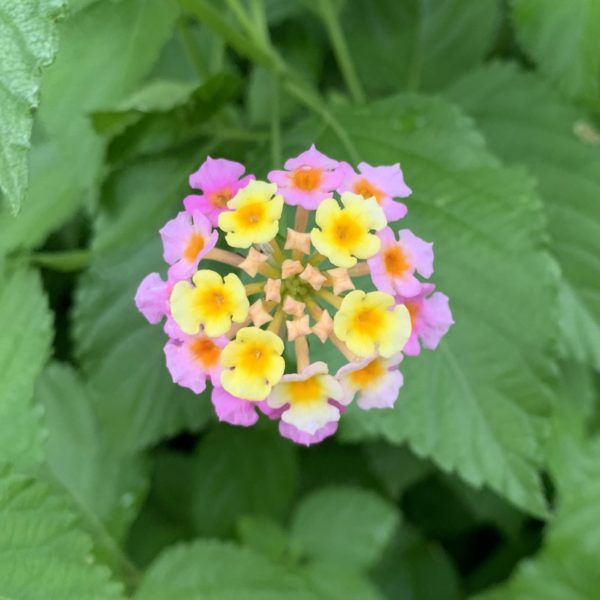
“Spring cannot be canceled.”
—David Hockney
After the catastrophic ice storm we had in February, it is enormously heartening to walk around the neighborhood 3 months later and see all the new growth and life. One plant at the end of my street that was hacked down to the ground is so tall now that I have to look up to see the top:
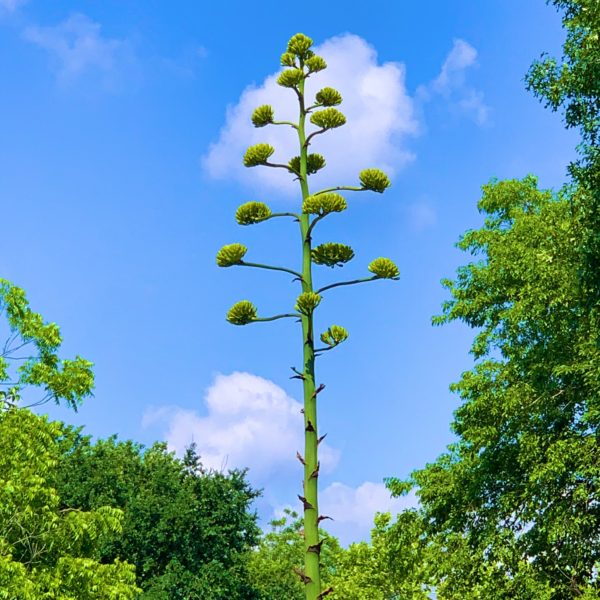
The prickly pear cacti that looked like they’d been melted in the microwave have now, in some places, grown a few layers of nubby neon paddles.
There are new fronds spiking out of the top of my battered windmill palms in the backyard.
And although Coconut and her mate have flown elsewhere, a cardinal has made a nest in one of the orange trees my wife has growing in a planter on the back porch. (We have named her “Claudia Cardinale.”)
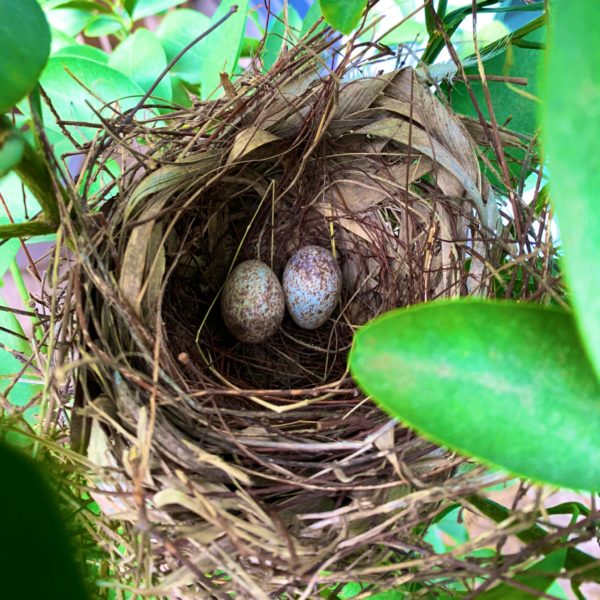
Return of the pansies
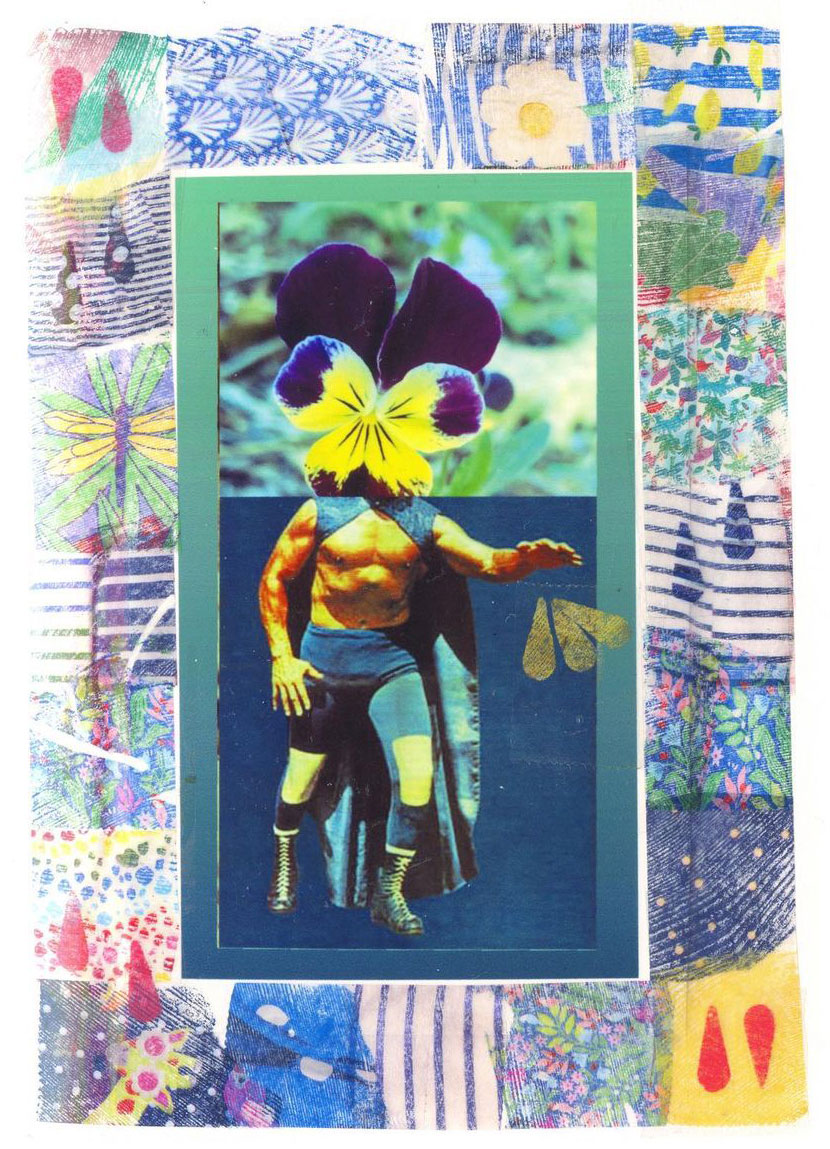
My friend Manjula Martin (author of Scratch: Writers, Money, and the Art of Making a Living) posted a pansy from her backyard that was so good I had to resurrect my dormant Pansy Luchadores project!
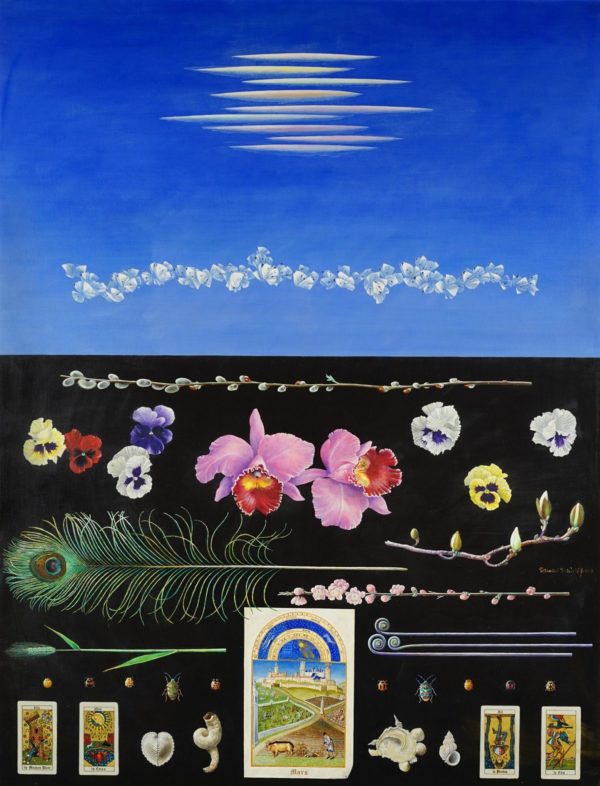
I’m become a little bit of a pansy nut and have taken to collecting (saving images to my hard drive) artwork featuring the flowers. I recently came across this wonderful painting by Tateishi Tetsuomi, who was described this way in a documentary synopsis:
Tateishi Tetsuomi was born in Taiwan in 1905. He returned to his birthplace to find painting subjects and then he had been attracted by the landscape and local cultures of Taiwan. During his stay in Taiwan, he made oil paints, illustrations and wood engravings for the magazine Minzoku Taiwan (Taiwanese Folklore).
He was regarded as a promising painter, but his achievements were to be forgotten when he was repatriated to Japan at the end of WWII and lost most of his paintings. He earned a living as an illustrator for children’s books, but finally achieved unique expressions in his last years.
And our recent neighborhood walks have yielded sights like this, so stay tuned for more:

Go on until you fall over
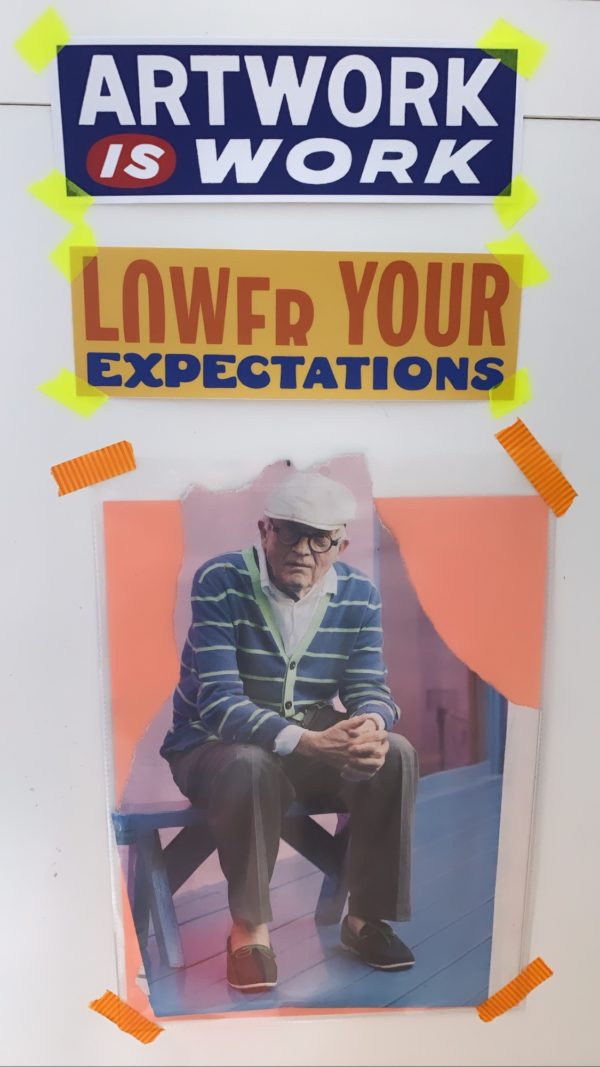
I’ve taped this picture of David Hockney back up in the studio. (Underneath these excellent bumper stickers.) It had a prominent spot on my bulletin board when I was writing Keep Going, and Hockney was one of the key figures I was thinking about when I wrote the book. (In the article the photo was clipped from, Hockney said, “I’ll go on until I fall over.” A motto worth stealing.)
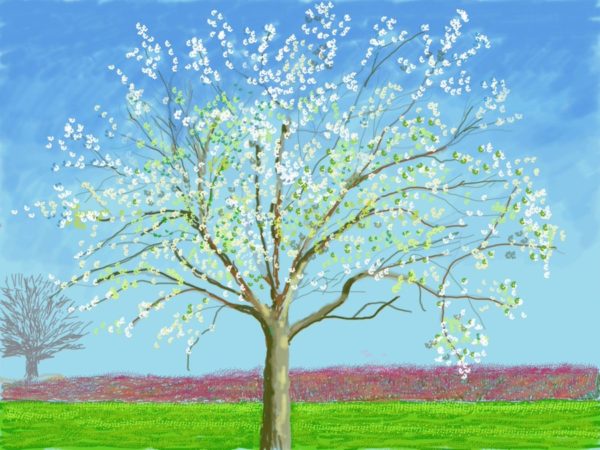
And so, it’s been great comfort to me to find out he’s still out there painting, in quarantine up in Normandy, sending “fresh flowers” from his iPad to friends, reminding us “they can’t cancel the spring,” even urging us to do our own drawing:
I would suggest people could draw at this time… Question everything…. I would suggest they really look hard at something and think about what they are really seeing…. We need art, and I do think it can relieve stress. What is stress? It’s worrying about something in the future. Art is now.
Hell yes. Go on until you fall over.
A few fragments of my grief
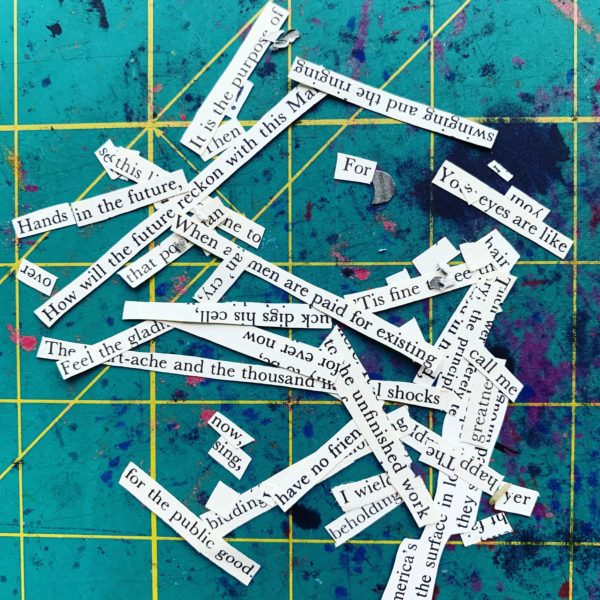
-
“The trees are coming into leaf
Like something almost being said;
The recent buds relax and spread,
Their greenness is a kind of grief.” -
“Such homeschooling! No homeschooler I know would voluntarily sign up for a homeschool devoid of libraries, parks, friend meetups, rousing trips to the coffee shop and long days at the museum.
Not to mention we’re all walking around like pale atlases, trying to hold up under the relentlessly grim news.
This isn’t homeschooling, this is HARD.”
-
“We’re feeling a number of different griefs. We feel the world has changed, and it has. We know this is temporary, but it doesn’t feel that way, and we realize things will be different…. Understanding the stages of grief is a start. But whenever I talk about the stages of grief, I have to remind people that the stages aren’t linear and may not happen in this order. It’s not a map but it provides some scaffolding for this unknown world. There’s denial, which we say a lot of early on: This virus won’t affect us. There’s anger: You’re making me stay home and taking away my activities. There’s bargaining: Okay, if I social distance for two weeks everything will be better, right? There’s sadness: I don’t know when this will end. And finally there’s acceptance. This is happening; I have to figure out how to proceed. Acceptance, as you might imagine, is where the power lies.”
